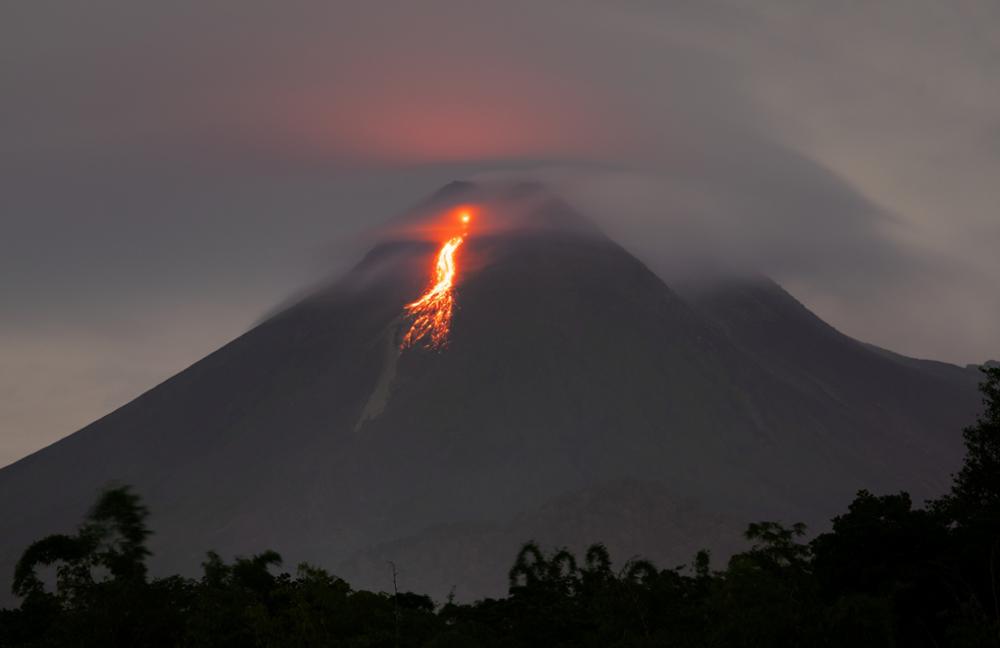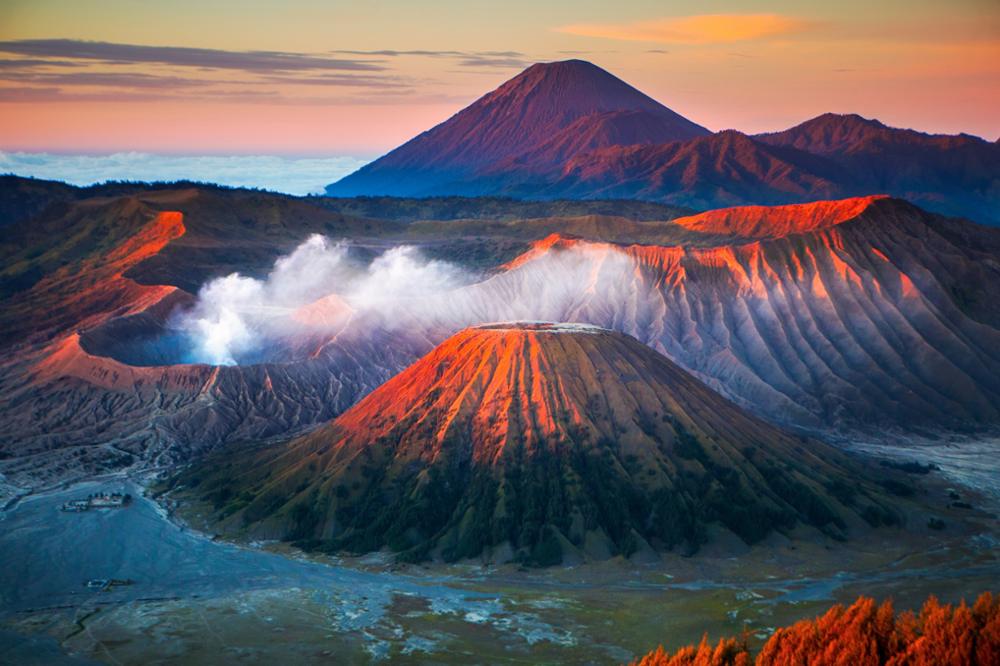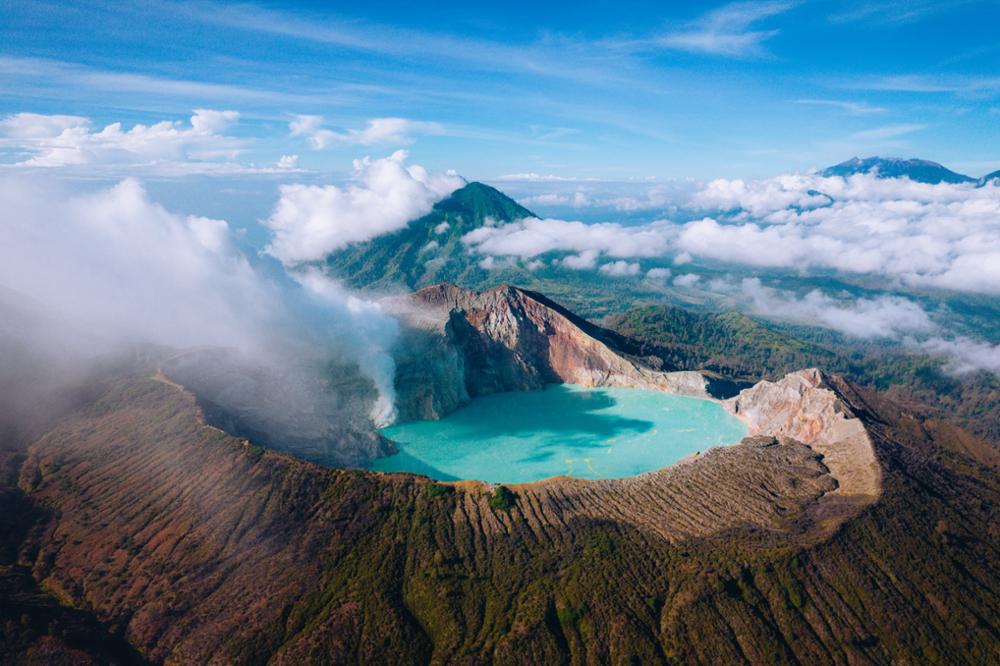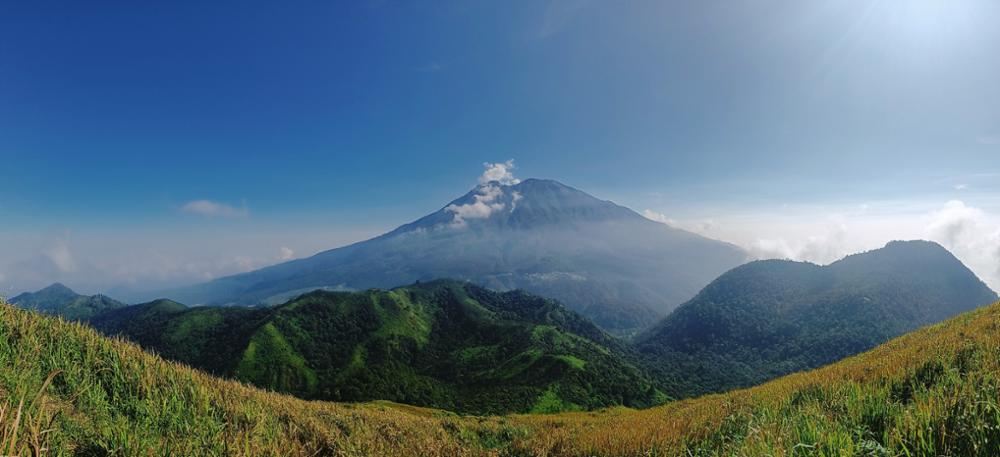Indonesia
Which volcanoes in Java should not be missed?
The island of Java is a destination of choice for trekkers and lovers of volcanic landscapes... Fumaroles, night hiking, blue flames, sunrise and sulfur lake: discover all the wonders of Java's volcanoes!
Merapi (or the most active volcano in Java)

North of the city of Yogyakarta is the Merapi volcano. Standing at an altitude of 2,900 m, it is the most active crater in Indonesia, with nearly 50 explosive eruptions between 1548 and 2010!
Known for its steep slopes, this volcano requires good physical condition - especially at the end of the journey, when the path gives way to stones... Allow around 4 hours of walking from the village of Selo (and 3 hours of descent).
During your ascent, you will be able to admire tropical vegetation, rice fields and bare rocks. An advice ? Opt for a trek departure between midnight and 1 a.m., to enjoy a superb sunrise!
Practical information
Ascent: difficult
Note: avoid the two monsoon periods (June-September and December-March) because of lahars – mudflows of volcanic origin.
Free access
The Bromo volcano

Located southeast of Surabaya, Mount Bromo rises to an altitude of 2,329 m in the heart of Caldera Tengger. Considered a divinity since the 15th century, the volcano receives offerings (animals, agricultural products, etc.) each year from members of the Tengger ethnic group during the Yadnya Kasada ceremony.
Without technical difficulty, the Bromo volcano is accessible to all trekkers. However, volcanic dust and sulfur fumes often invade the trail in the form of white smoke. Remember to take a mask or scarf so that you can successfully complete the climb.
Before starting the trek, plan for 1 hour of walking from the small village of Cemoro Lawang, or opt for a jeep ride. To avoid the crowds and the noise of the engines, choose an early morning departure (around 3 a.m.).
Practical information
Ascent: easy
Access: to see the volcano up close and access its famous sea of sand, you have to pay an entrance fee (around €14). The rest of the park is free.
The Kawah Ijen volcano

Kawah Ijen is known for its blue flames – formed by high temperature sulfur vapors. To see them, many hikers opt for a night climb (allow an hour's drive from the town of Banyuwangi, before arriving at the trailhead).
Once there, you will set off for an hour's walk (including 600 meters of elevation gain over 3 km), before reaching the crater... Arriving at the volcano, you will be able to see the famous flames, and witness the sunrise...
Note that the daytime ascent allows you to admire the sulfur lake in all its splendor – its emerald or turquoise waters – but also the surrounding panorama.
Practical information
Ascent: easy
Access: entrance to the volcano is chargeable (around €6/person)
Note: the daytime ascent is less touristy than the nighttime excursion!
The Lawu volcano

Standing at an altitude of 3,265 m, the Lawu volcano overlooks the province of Central Java. With a zone of fumaroles at 2,550 m (on its south face), this stratovolcano is also punctuated by three temples: Cetho, Kethek and Sukuh.
There are several trails to explore Mount Lawu, including two main routes, departing from both base camps:
- Cemoro Kandang (central Java side): this is the less steep trail of the two, but also the longest.
- Cemoro Sewu (east side): this is the steepest trail, but it does not require a confirmed market level.
During your trek, you will come across many indigenous people on pilgrimage, and will be able to admire tropical forests, savannahs and rice fields!
Practical information
Ascent: easy
Note: Dry season (April-October) is recommended for the ascent. In the rainy season, the trails become very muddy and difficult to pass.
Climbing the volcanoes of Java, with or without a guide?
Although several volcanoes on the island of Java are accessible without a guide, it is nevertheless recommended to call on a professional to carry out your visit. The reasons ?
The equipment required is not even from one volcano to another, and only an expert will be able to equip you appropriately.
The weather is quite changeable and can make the climb dangerous – even with good organization. In the event of a change in wind direction, clouds of smoke or rock flows may occur... In this case, your guide will be able to react and propose a fallback solution.
Difficulty can arise at any time: fatigue, accident, lack of resources... A professional guide knows how to prevent this type of incident and, if necessary, help you deal with it.
Finally, note that a guide is not necessarily an expert on all volcanoes... So be sure to go with an experienced person - or opt for a Java volcano tour!

